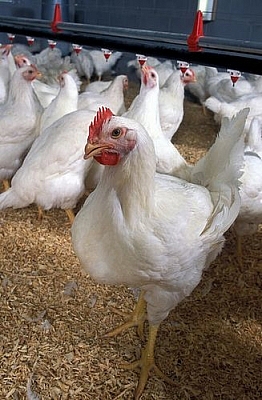In the French River area as in the rest of Northern Ontario, chicken farmers (and their egg and dairy counterparts) are faced with challenges unknown to Southern neighbours, but yet must play the same game. The rule makers are concerned with profits, not food security. And so, farming in the north is more difficult than many people may assume.

In this case, the Chicken Marketing Board decides who can produce chicken for sale through supply management, or what is more generally known as quota allotment. In essence, it can prevent small farmers from ever doing any real business by limiting production quantities as well as selling and marketing abilities. With the right to produce only 300 chickens at a time, to be sold at the farm gate with the use of limited marketing (road signs, for example), chicken farming in Northern Ontario is nothing more than a hobby or family affair.
I can testify to these very real effects, as witnessed by my own case. Last year’s feed cost increases mean we’re only producing eggs for the family this year, and no meat birds whatsoever. That may be highly disappointing for us personally, but in fact, chicken farming statistics for Northern Ontario are ridiculous. A farmer must produce 90,000 chickens per year to qualify for the Chicken Marketing Board’s quota system; however, only half that amount was produced in all of Northern Ontario in 2011. How does that add up? To enough local chicken to feed Northern Ontario’s population for one day per year. Shocking! How could something like this happen?
Easily. Northern Ontario’s size and reduced production contribute to challenges with infrastructure (such as processing facilities), transportation, and market accessibility, and ultimately, higher costs and lower returns. But that’s not all. New farmers must pay prohibitive fees to the Chicken Marketing Board just for the right to produce, while existing farmers benefit from the board’s services free of charge.
Currently, Northern Ontario has one quota holder. One farmer provides local chicken to all the North. No wonder we only get some one day per year — we’re not feeding ourselves, we’re paying Southern farmers to make it more difficult for us to earn livings and provide healthy food for our families! Clearly, no one farmer in this vast geographical area can even possibly dream of competing with the giants to the South, not when supply is impossibly lower than demand.
But since demand is in fact so high, why hasn’t the Chicken Marketing Board changed the rules?
Perhaps in this region, where agriculture plays such an integral role, residents are already aware of marketing boards that impose unfair flock and quota requirements on small farmers. And maybe they’d like to do something about it. Now’s the chance.
We Want Northern Chicken is a postcard campaign initiative by Eat Local Sudbury requesting Ontario Minister of Agriculture, Food and Rural Affairs Kathleen Wynne to increase small flock exemptions, modify quota allotments, and provide support for infrastructure and marketing development. As a community that not only depends on agriculture, but whose consumers also actively favour locally-produced goods, speaking up for farming rights in Northern Ontario benefits us greatly.
We Want Northern Chicken post cards to sign and mail are available at The Backstreet Gallery, Keyran’s, and Noëlville Pharmacy.
More information is available online from Eat Local Sudbury, Practical Farmers of Ontario, and Flocking Options.




Very nice and informative blog. Poultry farming is absolutely a lucrative business. I always search for this types of news and blog post related to poultry birds and poultry farming business. Really enjoyed your website writing.
Very informative article about poultry farming thanks for sharing your views.
Thanks for reading! I’m glad you enjoyed it (smiley face).